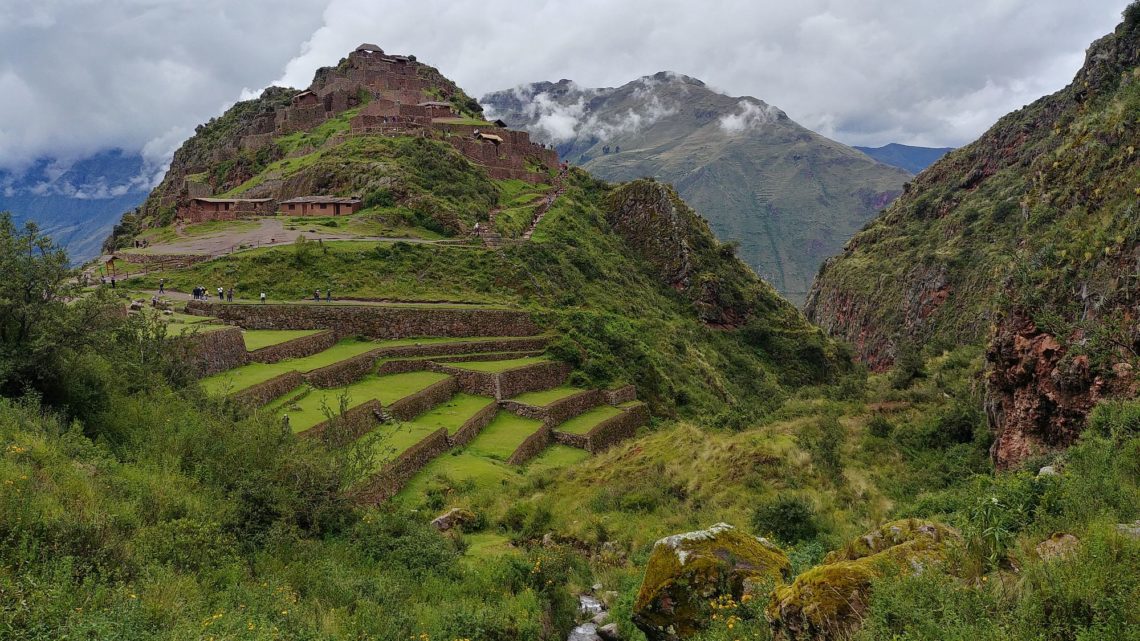
Sacred Valley
Day 256 – Aguas Calientes, Peru
This the start of my three days-two nights tour. Today is the visit of the Sacred Valley. (Pictures here.)
Note: we are still around 3,000m above sea level. I’m lucky to be acclimated, not headache, no dizziness, no shortness of breath left beyond the normal exertion. San Pedro de Atacama (Chile) was at 2,500m, Bolivia above 4,000m… I’ve been living above 3,000 for quite a while now!
The bus collected me at my hostel, and we left Cuzco. On the way, we passed by some of the ruins surrounding the city (the ones difficult to access on foot), so I was happy to see them.
We made a first stop at a lookout over the valley. My understanding of this valley is that it is aligned with the Milky Way. For the Inca people, that is particularly important for the afterlife, and so they made extra effort to bury their dead in this valley.
In many places, cliffs are riddled with holes -cemeteries. This is particularly visible at Pisaq, a village perched on one of the mountains. (See picture header.) Between flooding and invasion, it’s always better to be sitting high rather than low.
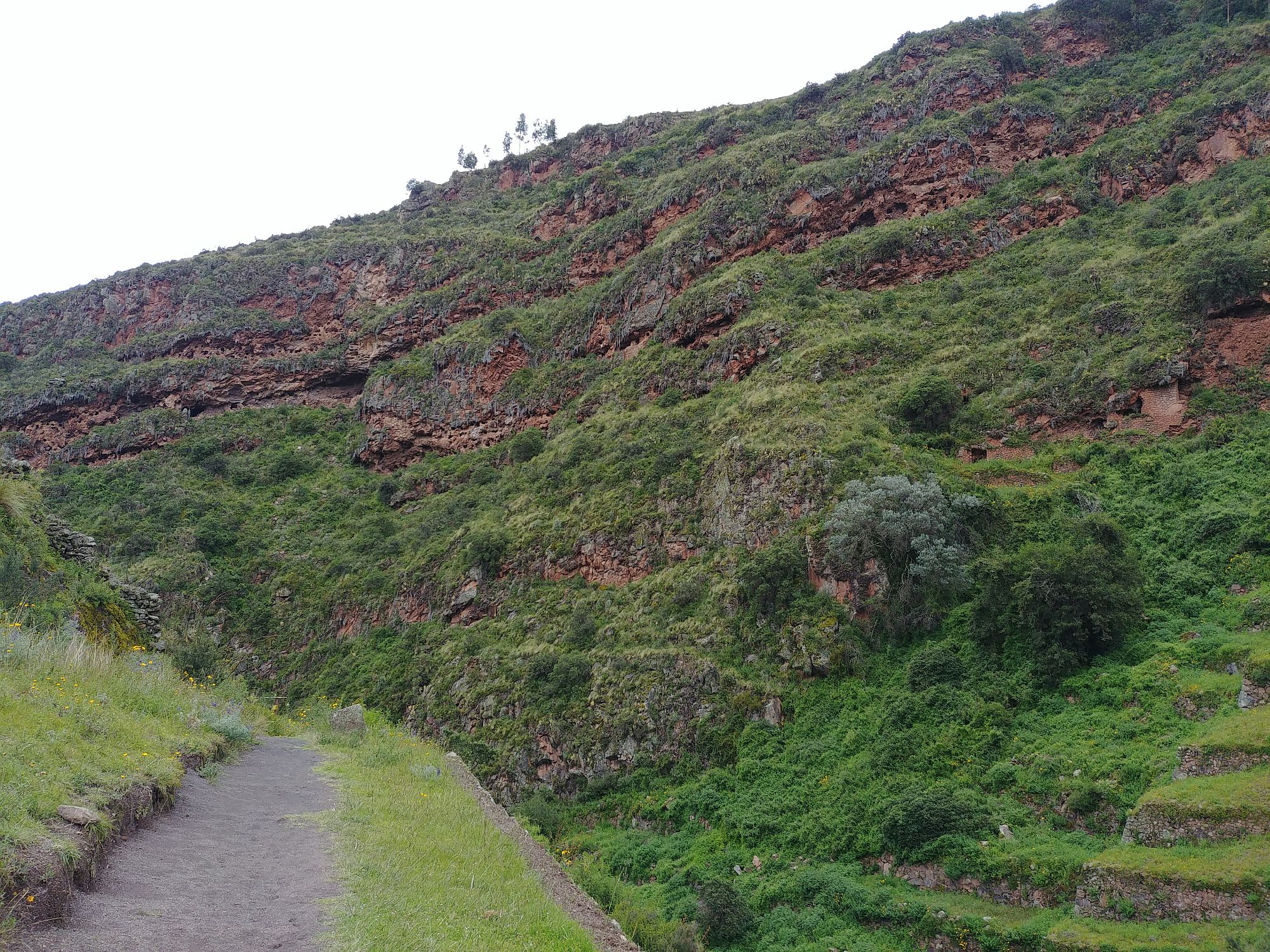
Pisaq – Cemetery: tombs in the mountain
The village of Pisaq is in two parts, separated by large terraces for growing food. Unless it used to be linked and the houses in between were destroyed, I don’t know.
We were shown how the walls were built, that the houses had few windows but many niches in the walls, presumably for storage. The village for abandoned a few years after the arrival of the Spanish invaders in Peru.
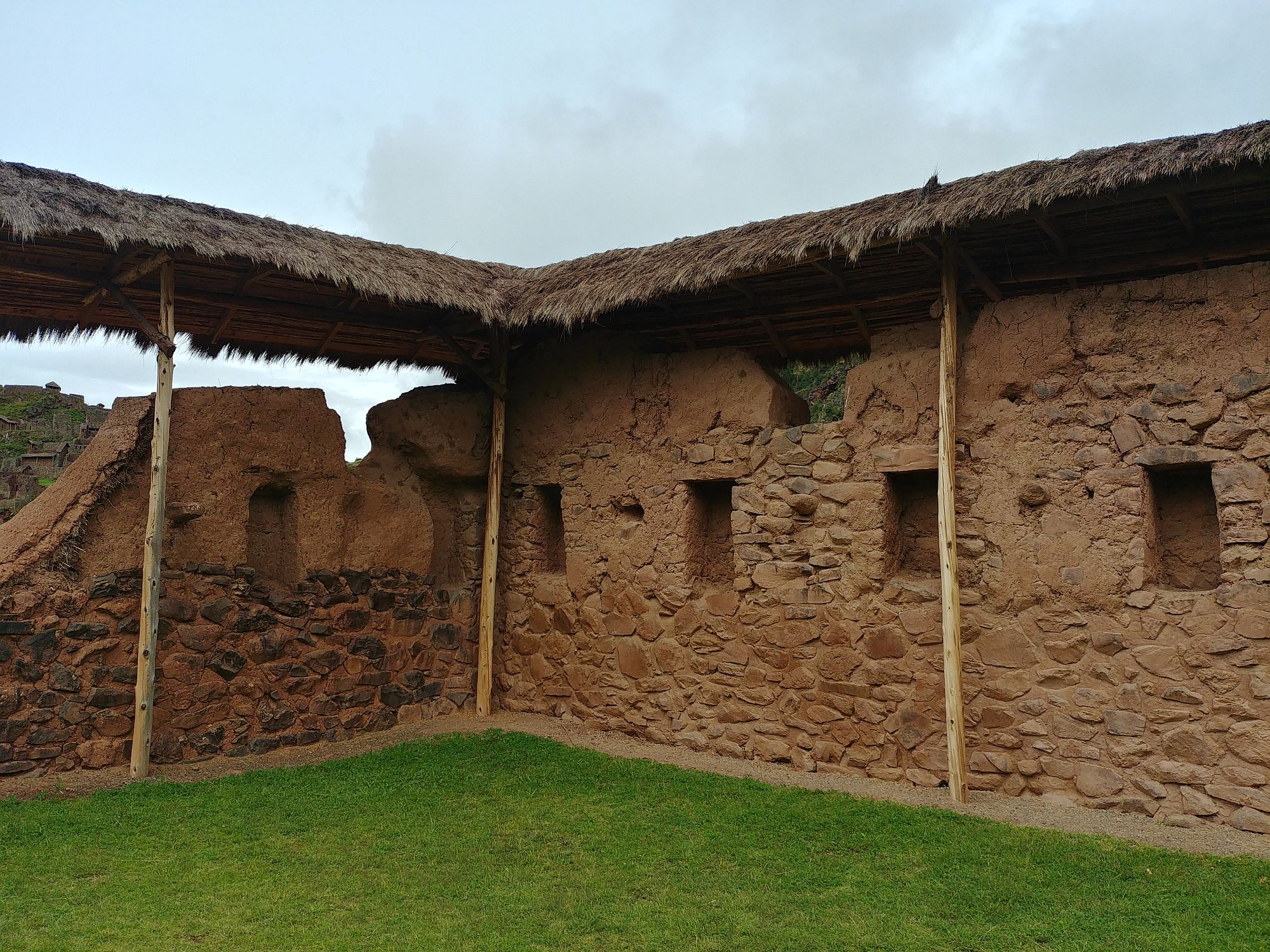
Pisaq – House
There are three cumulative factors to a huge population loss at the arrival of the Spanish people: one, disease, the European kindly brought smallpox, measles, tuberculoses, and other diseases unknown on the continent. (Skeletons of the time have traces of this.) Two, after the death of the Inca king (based in Cuzco) of smallpox, his two sons started warring for power. That turned into a war against the Spanish invaders at some point also. Third, the Inca people had a tax service in place where people paid a number of months of the year into labor. That was used to build cities, road, terraces, temples… Once the Spanish people ruled the country, they turned that tax from 1-3 months to 6-8 months a year, preferably working in mines in horrible conditions. Not only did people not have the time to grow food the rest of the year, but they died in huge numbers. So that’s how entire villages got abandoned in the space of a few years.
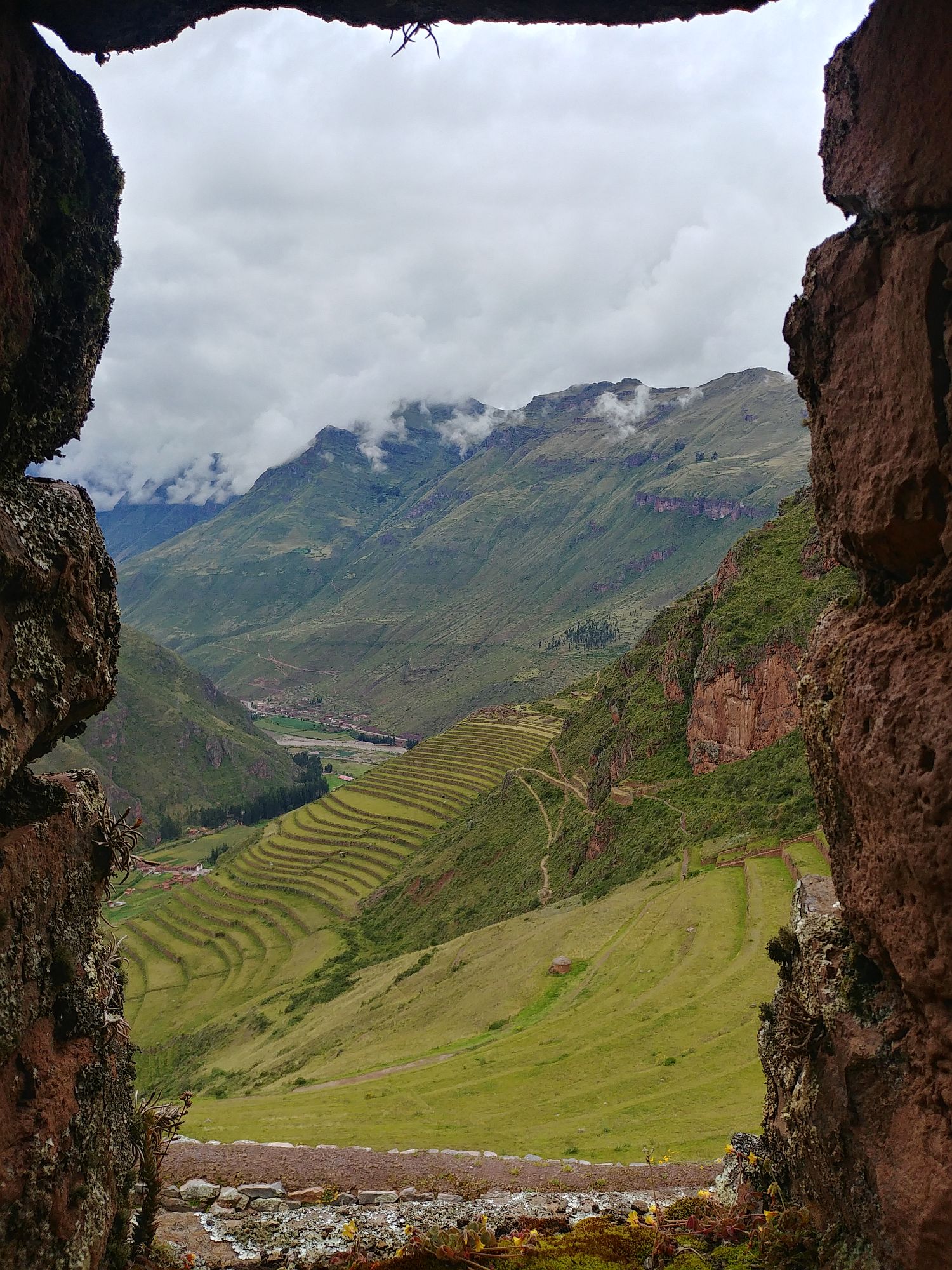
Pisaq – Looking through a window
After Pisaq, we went down the valley to the village of the same name, where we had a visit of a jewelery store. This place is known for its silversmiths apparently. Of course unloading a bus of tourist in a store with a nice speech about silver and local stones has nothing to do with selling said tourists their wares! At least, one can hope that in this shop at least the silver is genuine.
After some free time in the town, we went off to the next stop: lunch. On the way, we passed some stands where you can buy choclo y queso, corn with cheese. To advertise that, sellers wield corn beard at the passing traffic. One village later, and people wield roasted guinea pigs on a stick! That places is apparently known for them.
Everyone except me had taken reservations at different restaurants, so we were dropped off at different places. When I booked the tour, my agent told me as an afterthought that I could book lunch for 14 dollars (expensive in Peru), without giving me details, so I decided to bring my own food. If she had told me it would be a buffet of Peru specialities with delicious deserts, I might have changed my mind! Our tour guide showed me the garden of the restaurant, by the river.
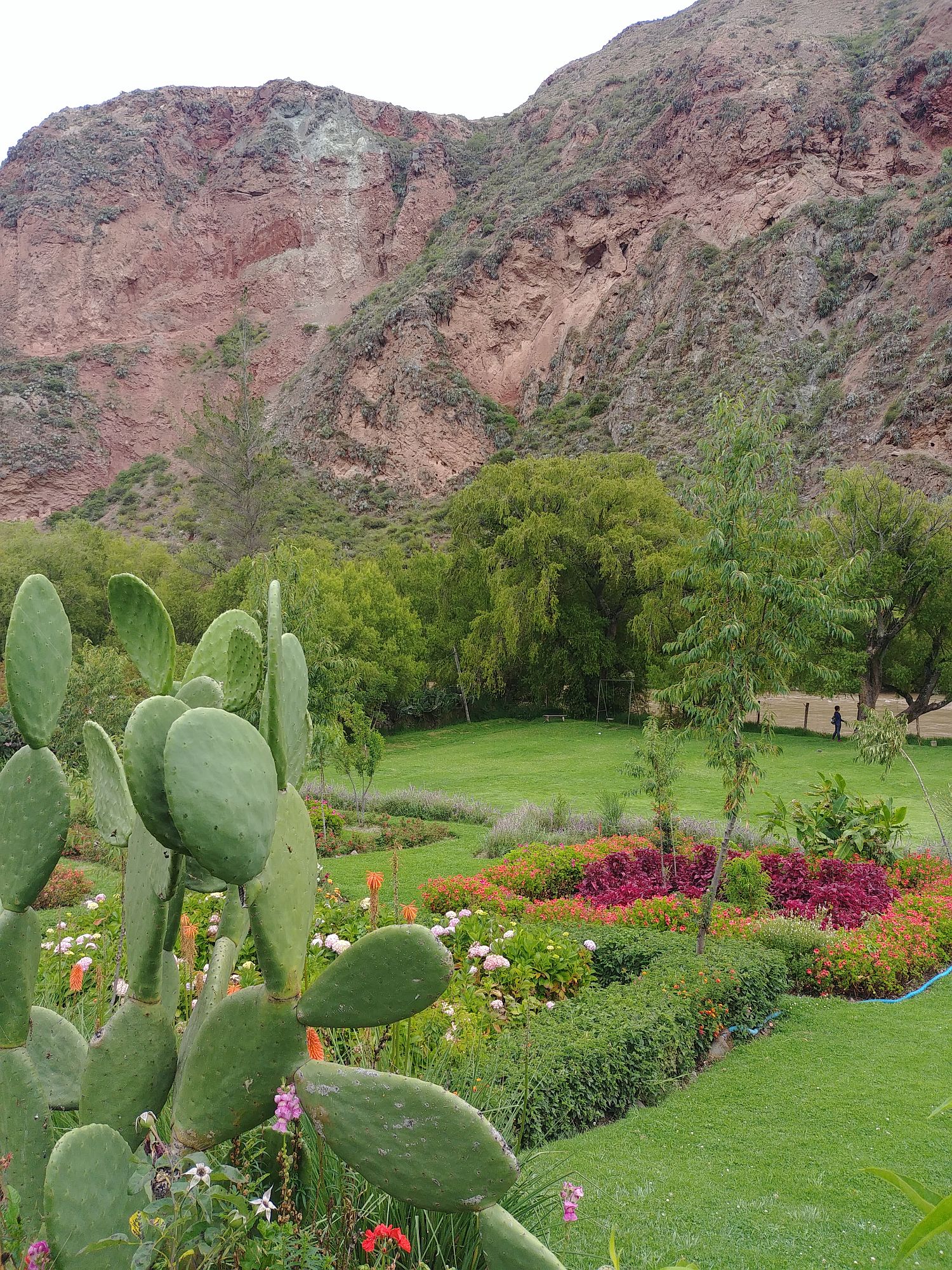
Restaurant garden
After lunch we headed to Ollantaytambo. Once again, the modern village is at the bottom of the valley and the Inca village is above, on the hills/mountains.
This place is more intricate. You have the usual terraces, but this time you have a sun temple exactly aligned to get the light from the sunrise, and in particular, on the opposite mountain, you have a carved profile, and a specific window receive the sunlight from the sunrise at the level of that profile on the Autumn equinox. You also have the sun peeking between two peaks at the Winter solstice at another level of the temple.
Lower down on the opposite mountain, the face of the god-creator has been carved -or exacerbated from existing natural rock formations, little is known. Food storage buildings are built above as a kind of crown.
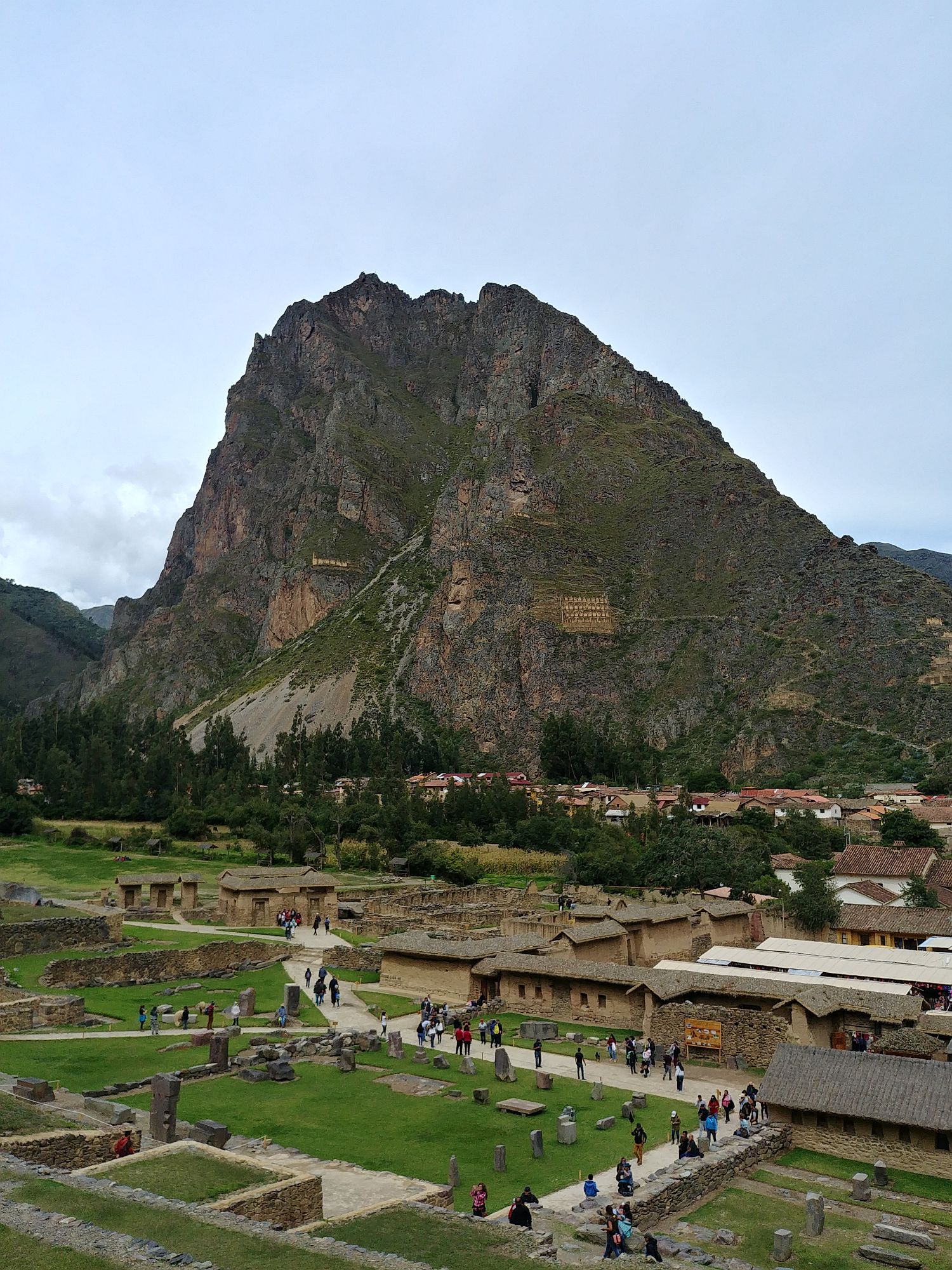
Ollantaytambo – Start on the right and follow the road on the opposite mountain. It leads to a structure with rows of windows. Look at this level slightly left, and you will find the profile of a grumpy bearded man. That’s the god-creator’s face.
The valley behind Ollantaytambo used to have a glacier, with colder wind; many storage building were on that side to benefit from the cold.
The guide took us up the terraces, in and around the temple, back across to more terraces, then down.
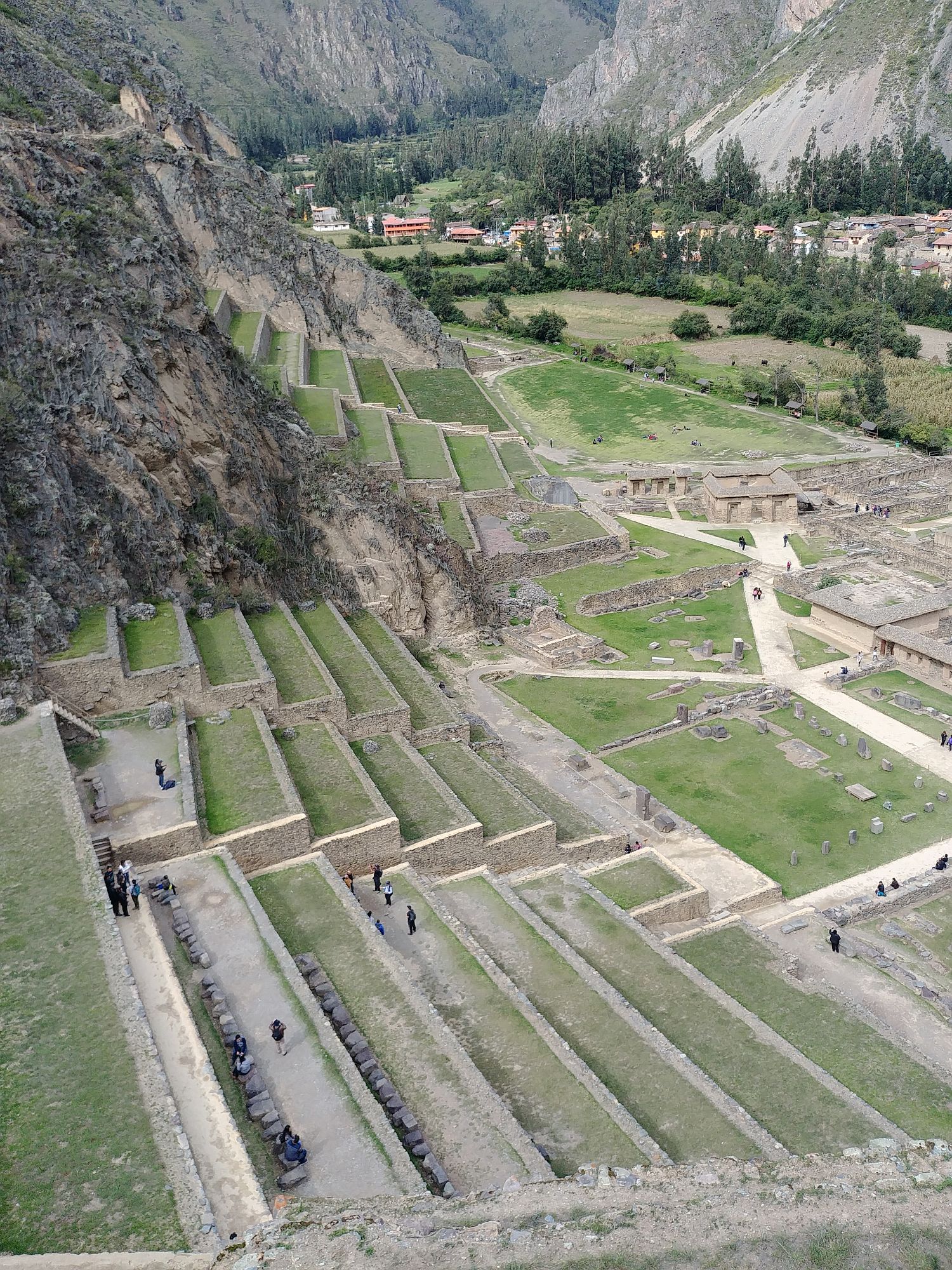
Ollantaytambo – From the Temple del Sol
Most of the group was headed back to Cuzco at this point with a last stop, I believe, but we were several to stop here because the train for Machu Picchu starts at Ollantaytambo. It is the low and rainy season, so it is cut between Cuzco and Ollantaytambo, so buses shuttle tourists to and fro. Adding the Sacred Valley tour was a bonus.
I had a later train, so I stashed my stuff at the agency office and had a walk around -translate that by hanged around tourist shops. I finally went for an early diner on the main plaza, where I finally tried the lomo saltado, a Peruvian dish. It is apparently slivers of beef sauteed with tomato and red onion, with vinegar and soy sauce. You serve with rice and French fries. It is very good (and very salty).
And then it was time to catch the train. You have very obviously carriages for the tourists and carriages for the Peruvian who are just travelling! The tourist carriages have wide windows, some are set in the roof also, to provide the best view of the mountains possible. Alas, it was night by that time…! No landscape to take the mind off the rough travel.